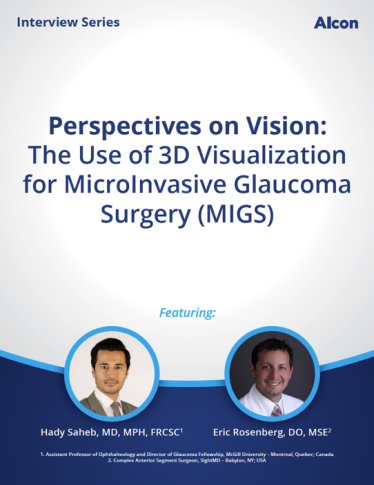- Visualization

Open-angle glaucoma is a leading cause of irreversible blindness worldwide.1 Glaucoma describes a group of progressive optic neuropathies characterized by retinal ganglion cell and nerve fiber layer degeneration that change the optic nerve head.2 Achieving early IOP control may reduce progressive loss of vision,3 and this is the mainstay of current treatment modalities. Typically, the general rule is to exhaust optimal medical treatment prior to considering the need for surgical management. Several medical options, such as multiple drug classes with several agents within a class, are available to the clinician, but side effects, inconvenience, and cost may result in low compliance, which defeats the goals of medical glaucoma treatment.2 Recent data has challenged this assertion of primary medical treatment to achieve an intraocular pressure (IOP) goal. In a randomized, prospective multi-surgeon trial of two trabecular bypass stents versus prostaglandin medical treatment of treatment-naive glaucoma patients followed for 5 years, 77% of surgically-treated patients vs 53% of medically-treated patients (p = 0.04) achieved treatment success (no additional medication or procedural treatment required).4 The use of focused energy treatments to increase aqueous outflow, such as the use of Selective Laser Trabeculoplasty (SLT),5,6 has also shown success independent of medication.
The use of the trabecular bypass concept via trabeculectomy or aqueous shunts for the surgical treatment of glaucoma has advanced over time, with the goal of providing more reliable, less invasive control of intraocular pressure.7 In a study evaluating the trends of glaucoma surgeries in Medicare Patients from 1994-2017, the use of new microinvasive glaucoma surgery (MIGS) has rapidly increased, now accounting for a significant majority of glaucoma surgeries.8

